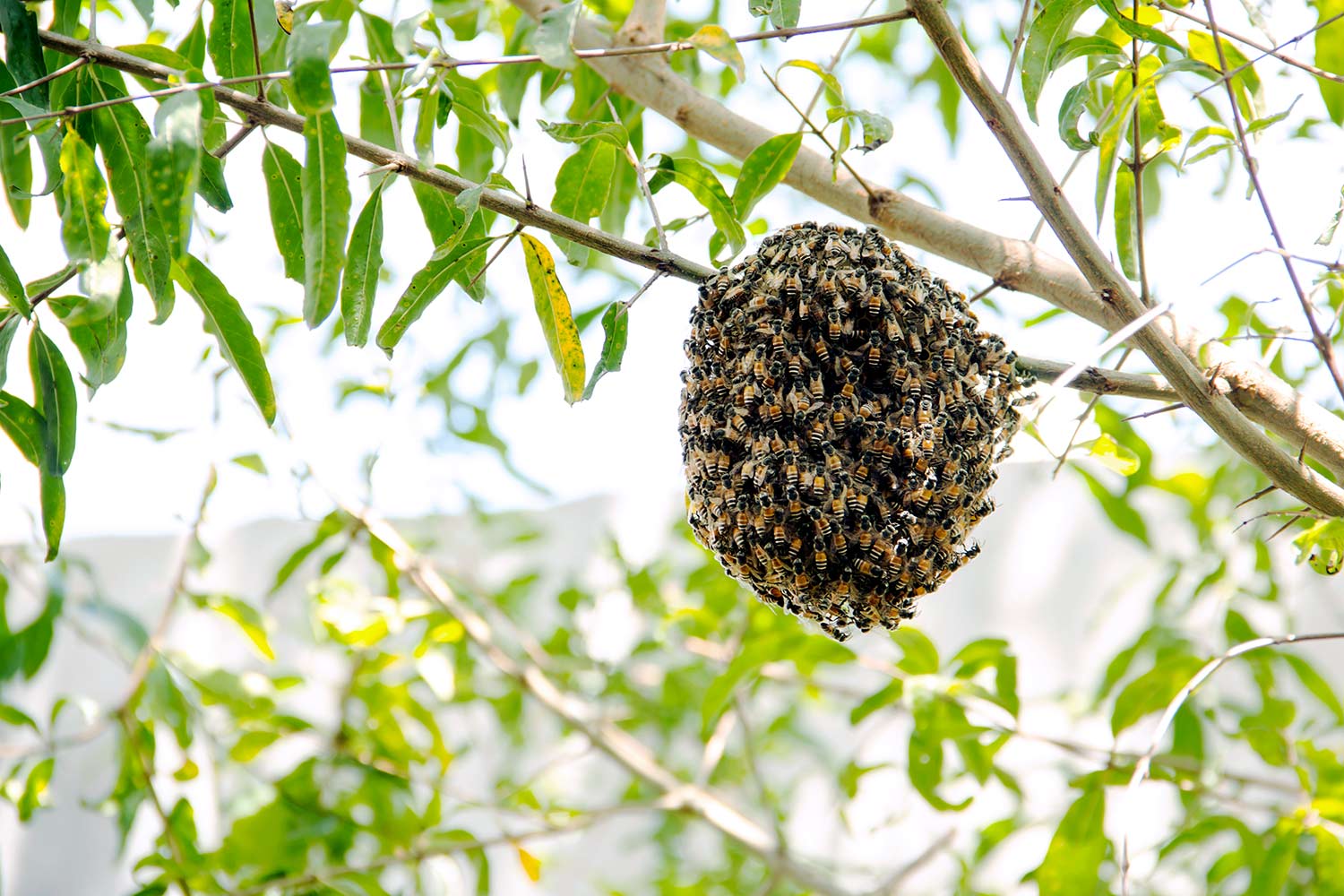
Honeybees are poikilotherms, so they are sensitive to temperature changes. If the body temperature of the bee falls below 10℃ (50℉), paralysis of the bees’ muscles can begin to take place. At a body temperature of 7.2℃ (45℉) the bees appear “frozen,” meaning their muscles can no longer move. So flying activity does not take place outside of 10℃–14℃ (50℉–57℉) air temperature. Instead, they’ll choose to stay inside the hive. They have to work diligently to prepare food for the winter before the cold wind blows. However, having food prepared in advance does not mean they can spend comfortable winter.
They have to cluster together to generate heat because they do not hibernate like other animals. Their clustering like a ball to generate heat is called “winter cluster.”
The bees keep the core temperature of the cluster at around 21℃ (69℉), but when brood is present, its temperature is around 35℃ (95℉). Once the cluster is formed, they don’t cluster at a same spot but they rotate inside and out to share the warmth evenly. And at this time, if it falls alone without being attached to the cluster, it’ll not survive the cold and die.
Bees cannot stand the cold. They can never overwinter alone. But if they cluster tight together, they can easily survive.